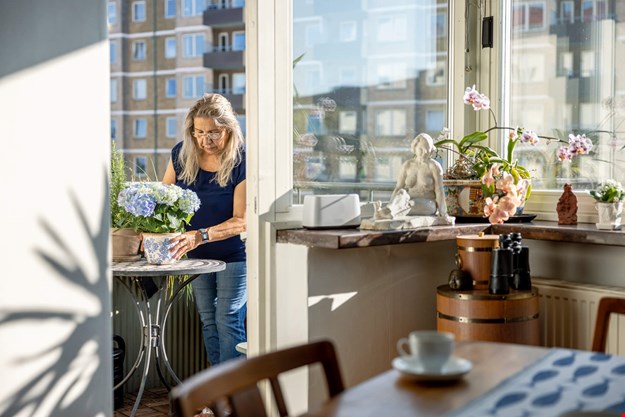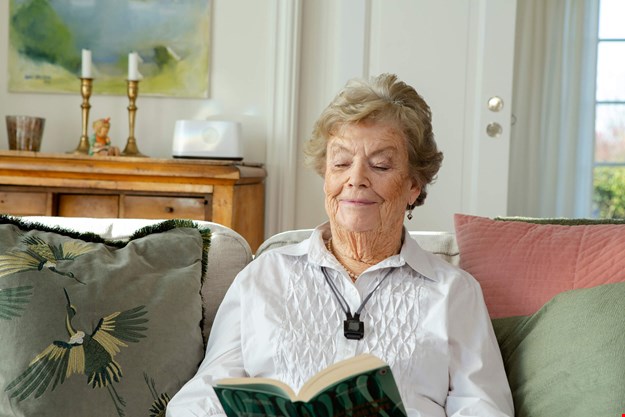-
Country
-
Search
A forgotten candle, an unsupervised cooktop or a dropped cigarette. Every year far too many people die from fire-related accidents, but with the right technology it is possible to increase security in the home.
Having a good smoke alarm is often described as being the cheapest life insurance you can have. Now Careium is introducing new, advanced smoke, heat and carbon monoxide detectors with a battery life of 10 years that can be interconnected to each other and to social alarms. Smoke detectors detect smoke and are best at identifying an actual fire. Heat detectors detect heat and are ideally installed in kitchens where a regular smoke alarm can generate unnecessary false alarms. Carbon monoxide detectors warn of the presence of carbon monoxide gas in the air and of harmful levels of this gas.
As the detectors can be interconnected, all alarms installed in the home will sound if one of them is activated. When detectors are interconnected, people learn of the danger earlier and have more time to get to safety and call for help. Interconnected fire detectors are becoming increasingly common, and since February 2022 they have been required by law in, e.g., Scotland (Scottish Government, 2022).
"By interconnecting detectors, you avoid the risk of not hearing the alarm if you are in another part of the house. This is especially important for older people who often suffer from hearing loss," says Peter Cullin, Product Manager at Careium, continuing, "The time it takes to hear the alarm can be the difference between it being a minor accident or a major tragedy."

Studies show that fire detectors that are effective for younger target groups are not as effective for the elderly and aids other than basic fire protection are generally required (Runefors, M., 2020). Elderly people are heavily overrepresented in the statistics of those who perish in fires every year, possibly as a result of motor deficiencies, the influence of heavy medications, memory difficulties and impaired vision or hearing. According to Statistics Sweden, the number of elderly people who choose to remain at home will only increase in the future. Therefore, greater measures are required to break the trend of these gloomy statistics (Swedish Fire Protection Association, 2022, Swedish Civil Contingencies Agency, 2022).
"Our elderly are at the biggest risk when it comes to being injured or killed in a fire. Appropriate aids can be a matter of life or death," says Peter Cullin.
Careium smoke, heat and carbon monoxide detectors can be directly connected to social alarms. This is a small measure, but it circumvents the elderly person needing to identify the danger themselves or risk not having time to react. At the social alarm receiving centre, priority is given to alarms triggered by fire or the presence of carbon monoxide gas and are forwarded within seconds. Through the social alarm, the alarm operator can be informed of the danger and communicate directly with the elderly person to help them understand the situation and, if possible, get to safety. By connecting the detectors to the social alarm, it is also possible to set other preferences. For the hearing impaired, the high-frequency tone emitted by an alarm is often difficult to hear so it is possible to change and customise the signal. It is also possible to set a voice alarm which may feel less intimidating.

Installing smoke and heat detectors that can be interconnected to each other and to social alarms increases security for the individual, relatives and home help services. There are also major advantages to municipalities working preventively with fire safety. A study conducted collaboratively between Careium and Karlstad University concluded that there are direct economic benefits to installing smoke alarms that are directly connected to an alarm centre for older people who have social alarms, as this is an effective way of preventing accidents (A. Carlsson, 2021).
With the new interconnected Careium fire, heat and carbon monoxide detectors, it is easier to prevent injuries and even save lives. It is possible to increase security throughout the home by interlinking several detectors, avoiding the risk of not hearing an alarm in another room. For older people who may have difficulty both reacting and responding to an alarm, connecting detectors to social alarms can reduce the risk of unnecessary accidents.